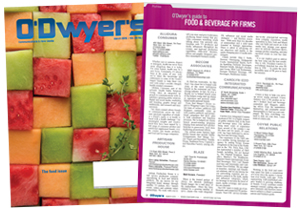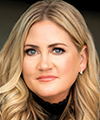 Consumers are becoming more aware of the serious weight problem in the United States, but several factors are hindering improvement according to the 2015 “What’s Trending in Nutrition” survey conducted by Pollock Communications, and the nutrition trade magazine, Today’s Dietitian. Here’s what food manufacturers need to know.
Consumers are becoming more aware of the serious weight problem in the United States, but several factors are hindering improvement according to the 2015 “What’s Trending in Nutrition” survey conducted by Pollock Communications, and the nutrition trade magazine, Today’s Dietitian. Here’s what food manufacturers need to know.
Obesity awareness is rising in the U.S. Healthcare professionals, lawmakers and the media openly and frequently discuss the issue of obesity and what can be done to curb its growing rates in the U.S., along with the myriad health ailments that it causes, including heart disease and diabetes.
According to the Centers for Disease Control (CDC), obesity is common, serious and costly:
• More than one-third (34.9% or 78.6 million) of U.S. adults are obese.
• Obesity-related conditions include heart disease, stroke, type 2 diabetes and certain types of cancer, some of the leading causes of preventable death.
• The estimated annual medical cost of obesity in the U.S. was $147 billion in 2008 U.S. dollars; the medical costs for people who are obese were $1,429 higher than those of normal weight.
|
|
According to the annual survey of 500 registered dietitians, however, a majority of consumers have not grown complacent. In fact, the survey revealed that 70% of dietitians believe consumers will be more interested in nutrition and weight loss in 2015 than they were in 2014. In addition, 44% of dietitians last year felt that more Americans were becoming comfortable with the idea of being at an unhealthy weight, but this year’s survey reveals that only 26% of dietitians feel the same way, indicating a turn in the tide. More consumers want to take action to lead healthier lifestyles. This, of course, is good news, but the survey also revealed several hidden obstacles that consumers face in the battle against the bulge.
Below are several factors that could be fueling the weight problem in America:
A proliferation of misinformation
Blogs dish about nutrition, but can’t always be trusted. Many nutrition experts (42%) agree that consumers are getting their health and nutrition information from blogs and websites. Nearly 40% also agree that consumers receive the most misinformation from blogs and websites, and they predict that there will be more nutrition misinformation available in 2015. More than 90% believe the mass quantity of nutrition information and misinformation is more likely to lead to consumer confusion and lack of diet improvement.
Adoption of fads over healthy lifestyles
Gluten-free diets dominate the weight loss fads of the moment, but eliminating gluten will not eliminate obesity. According to the experts, 66% believe gluten-free or wheat-free diets will continue to be trendy in 2015.
“Cutting out wheat or avoiding gluten may not promote weight loss or improve health independently, but choosing foods that are ‘free’ of certain ingredients or nutrients remains popular among consumers,” said Jenna Bell, Senior Vice President and Director of Food & Wellness at Pollock Communications.
Dietitians also noted that we will see “clean eating” and the Paleo diet, as popular eating trends, but 51% of nutrition experts say that choosing high-quality, nutrient-rich foods in all food groups, is the best diet advice to follow. It boils down to making the right food and lifestyle choices, rather than following the diet fads.
Confusion over the right choices
While low-carb diets remain strong, low-fat diets are fading. For another consecutive year, the overwhelming majority of dietitians predict that the low-fat diet will fall flat in 2015, with only 4% naming it as a popular eating trend among consumers. As consumers welcome fat back into their eating plans, the question becomes: which fats are best? In the battle of the fats, 84% of nutrition experts agree that consumers should replace saturated fat with good fats (mono- and polyunsaturated fatty acids). While scientists continue to explore the impact of different types of dietary fats and their food sources, very low- or no-fat eating is definitely out.
“Dietitians recommend a balanced diet that includes sources of fat and a pattern that aligns with current national guidelines for reducing the risk of cardiovascular disease,” said Bell.
Speaking of saturated fat, it needs to be taken into consideration when choosing proteins to include in a healthy diet. The survey revealed consumer confusion about high-quality proteins. According to dietitians, most consumers view animal-based protein, such as meat, fish and poultry, as high-quality, but nutrition pros rank them differently, recommending (in order) fish and seafood, eggs, legumes and nuts, poultry and dairy as healthy, high-quality proteins, followed by soy. Red meat is considered less healthy among the nutrition pros, most likely due to the saturated fat, cholesterol and high environmental demands required to produce beef. With consumer confusion comes poor choices.
Unrealistic, unhealthy comparisons
How do consumers gauge their health and weight? By comparing themselves to friends and family, say 35% of dietitians, while 30% say that consumers use people in magazines or on television as their basis for health and weight comparisons. Obviously, this sets the consumer up for failure. Either they mistake unhealthy weights as the norm or set unreachable goals for themselves. These pitfalls are part of the hidden triggers that sabotage good intentions.
Disconnect between wants and needs
According to the experts, consumers are looking for more eco-labels in 2015, with 69% of experts saying that GMO-free labels are most important to their clients. Dietitians predict that GMO-free, gluten-free, clean eating/clean ingredient list and organic will have more of an impact on consumer choices in the coming year. However, while there will be new food and nutrition trends — or “consumer wants” — in 2015, the survey revealed that shoppers’ choices are ultimately dictated by three basic needs — convenience, taste and price. There are some things shoppers just won’t sacrifice, regardless of what’s trendy.
* * *
Louise M. Pollock is President of Pollock Communications.



 What the biggest meal of the day can teach us about serving up effective nutrition communications campaigns.
What the biggest meal of the day can teach us about serving up effective nutrition communications campaigns. Tips to refine and amplify your CPG brand strategy to win in 2024 and beyond.
Tips to refine and amplify your CPG brand strategy to win in 2024 and beyond. Strategic communications strategies for success in the growing “food is medicine” movement.
Strategic communications strategies for success in the growing “food is medicine” movement. How brands can authentically communicate sustainability issues and create a brand experience that’s compatible with consumers’ values.
How brands can authentically communicate sustainability issues and create a brand experience that’s compatible with consumers’ values. Communicating the effects that climate change and a growing world population have on our food system—and why change is needed.
Communicating the effects that climate change and a growing world population have on our food system—and why change is needed.


 Have a comment? Send it to
Have a comment? Send it to 
No comments have been submitted for this story yet.